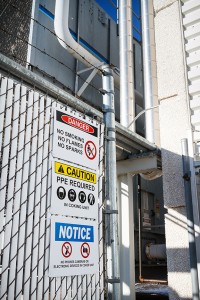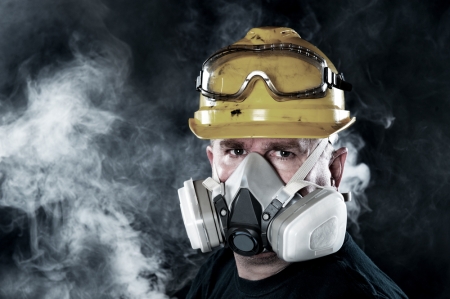Every year on the last week of September the NSC Conference has a big unveiling of the year’s 10 OSHA Top Violations, but when you look at the hard facts, much of those top ten OSHA safety violations have remained unchanged for quite a few years running. If these are the most troubling violations leading to injury and death year over year, why hasn’t there been more of an effort to make a change? Why wouldn’t we eliminate these workplace safety hazards from continuing to be a danger to workers? Where is the ball being dropped? Is it with OSHA, or with individual companies?
Here are some helpful tips that will help you eliminate top 10 OSHA safety violations from your workplace in 2016.
Fall Protection (29 CFR 1926.501), 7,402 total violations
Fall protection has been at the top of OSHA’s list for 5 years in a row, with much concern and attention paid to the impact it has on the safety of workers specifically in the construction industry. When working at heights of 10’s or even 100’s of feet in the air it is critical to ensure that your workers not only have the right fall protection supplied to them but that they also know how to properly use it before any work begins. Incorrect implementation of safety precautions and fall protection safety signs are just as dangerous if not worse than having none at all.
Want to learn more about fall protection? Read Don’t Fall Out Of Compliance: What You Need To Know About Fall Protection
Hazard Communication Standard (29 CFR 1910.1200), 5,681 total violations
2016 will bring with it the final GHS deadline in June 2016. While it has been a long and difficult process to implement protocols all the way up the supply chain and stick to deadlines, once all is said and done, GHS compliance will have a great impact on osha safety standards and safety for workers who interact with dangerous substances on a regular basis. Through cost reductions, productivity improvements and decreased instances of injury and illness GHS will begin saving a total of $745 million annually across all industries it has impacted.
Want to learn more about GHS?
Read more about Symbols of Danger: Understanding GHS Pictograms
Scaffolding (29 CFR 1926.451), 4,681 total violations
In another issue specific to the construction industry, 72 percent of workers injured in scaffold accidents identify the planking or support giving way or slipping, or being struck by a falling object. Ensuring that scaffolding is erected properly before work begins goes a long way in protecting workers in addition to having regularly scheduled assessments, proper implementation of osha safety signs and fall protection guardrails in place for those who will be working on or around scaffolding areas. Enforcing PPE rules for those who will be working in these areas is also crucial when it comes to preventing struck by hazards caused by falling objects.
Respiratory Protection (29 CFR 1910.134), 3,626 total violations
2016 may become a year of big changes when it comes to respiratory protection as it concerns permissible exposure limits and the passing of OSHA’s workplace safety long awaited Silica rule. Outside of reducing the levels of acceptable exposures, when it comes to providing protections against chemicals that cannot be eliminated from work processes, selecting the proper respiratory protection can prove to be tricky. The most important step to selecting the correct respiratory solution for your workplace starts with have a good understanding of the substance you are trying to protect against. Not all respiratory protection is created equally and each workplace safety hazards come with its own rules and solutions for protecting your workers against them. Choose wisely and make sure your solutions properly fit your workers.
Want to learn more about respiratory protection? Read up on Respiratory Protection: Compliance Myths
Control of Hazardous Energy (Lockout/Tagout) (29 CFR 1910.147), 3,308 total violations
Number 5 on the 10 OSHA Top violations, Lockout Tagout often is an area that can easily become overwhelming for those in charge of keeping their procedures up to snuff. If one little thing changes, the whole procedure may need rewriting. However, never fear technology is on your side with many different procedure writing software’s and services available it is easy to get someone out to your facility and assist you in creating a plan that is sustainable and can be easily maintained.
Want to learn more about Lockout/Tagout? Read Are You Creating Effective Lockout Tagout Procedures?
Powered Industrial Trucks, General Industry (29 CFR 1910.178), 3,004 total violations
Forklift safety is only one piece of the pie when it comes to creating an effective powered industrial trucks safety plan. Realizing that these trucks are interacting with humans the battle of man -vs- machine is important to keep in mind (HINT the loser is always man). When creating a game plan to keep all workers safe consider the physical conditions of your facility; how pedestrian traffic will interact with truck traffic, and also if there are any hazardous areas that should be deemed off limits to forklifts such as areas that are enclosed or have little ventilation. Lastly, make sure that OSHA safety signs are properly implemented in your facility.
Want to learn more about forklift safety? Read Forklift Safety Best Practices: How Workplace Conditions Affect Safety Operations
Ladders (29 CFR 1926.1053), 2,732 total violations
Ladder safety seems like a no brainer when you get down to it. Make sure it is in working order, that it is clean, and that it has secure placement before use. However, there is no way to account for the unexpected. A number of things could go wrong while climbing to heights at which a fall could prove fatal. Ladder safety should not be overlooked and starts with having a clear understanding of the basic principles. But a workplace should always have fall protection safety signs in place and a backup plan when unexpected hazards emerge such as wind, flying objects, animals, ladder malfunction etc.
Want to learn more about ladder safety? Read Step up: Best Practices of Ladder Safety
Electrical (Wiring) (29 CFR 1910.305), 2,624 total violations
The misuse of cord and cables, uninsulated wiring and extension cords are where this violation saw the most offenders, with the silver lining being the number of total incidences for this standard are trending downward from 2014 to 2015. Other good news from OSHA shows that they are revisiting these OSHA safety standards for updates after 40 years of being untouched and on the books. Changes made to this 40 year old rule are thought to be able to save an additional 20 lives per year while preventing 118 other injuries.
Want to learn more about Electrical (Wiring)? Breaking Down the Regulation
Machine Guarding (29 CFR 1910.212), 2,540 total violations
Losing an arm or eye because of exposure to blades, getting caught in a machine, or particles flying off of a machine are all causes for concern when it comes to machine guarding. When production timelines are tight, these are the times that machine guarding accidents are most likely to occur. When chaos ensues workers are more likely to begin to cut corners and could land themselves in a very dangerous situation. With the proper OSHA safety signs implementation and guarding in place facilities are able to eliminate the possibility of these life altering injuries from occurring. Protecting workers from points of exposure and improving anchoring of a fixed machine are two ways to improve any machine guarding safety plan.
Want to learn more about machine safety? An Introduction to Machine Guarding
Electrical, General (29 CFR 1910.303), 2,181 total violations
Improper installation or use of tolls and equipment are main concerns for the Electric Standard to round out the 10 OSHA top violations. As with the wiring regulations, OSHA is also putting a fresh set of eyes to this standard as well in hope to continue to drive incidents and violations because of this standard down.
Want to learn more about Electrical Safety? Preventing Facility Hazards: Electrical Safety Tips You Need to Know
It goes without saying that OSHA will have a busy year ahead of it in 2016 and with fines increasing by 80% and inspectors performing longer and more comprehensive audits, it is in the best interest of all facilities to do everything within their power to comply before OSHA safety violations occur or even worse—before injury or fatality occurs.
Need help assessing the safety needs around your facility? We can help. Click here.









